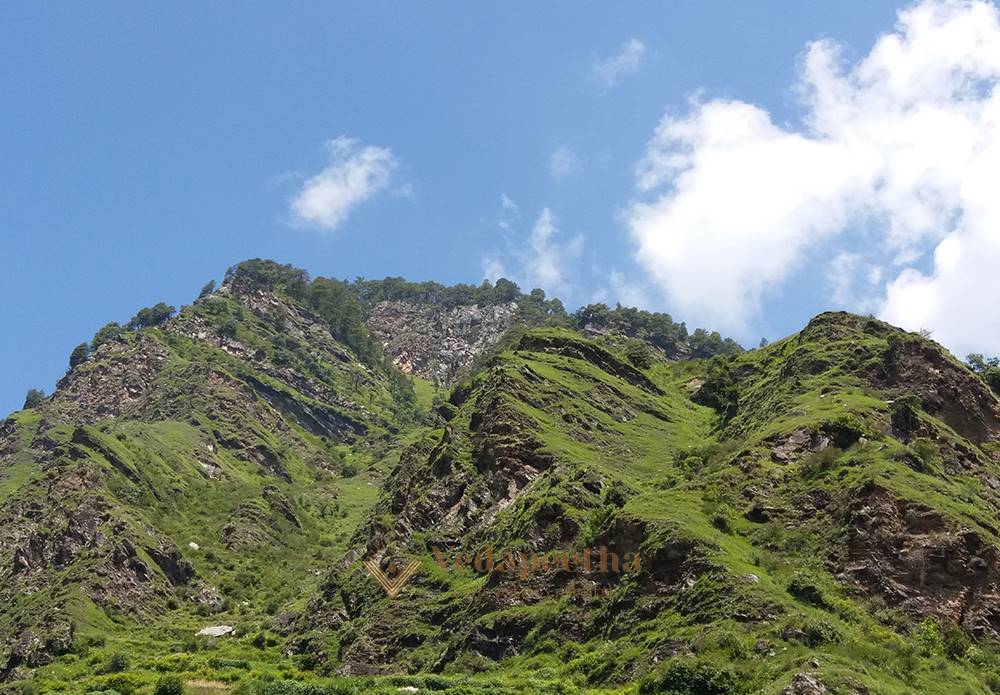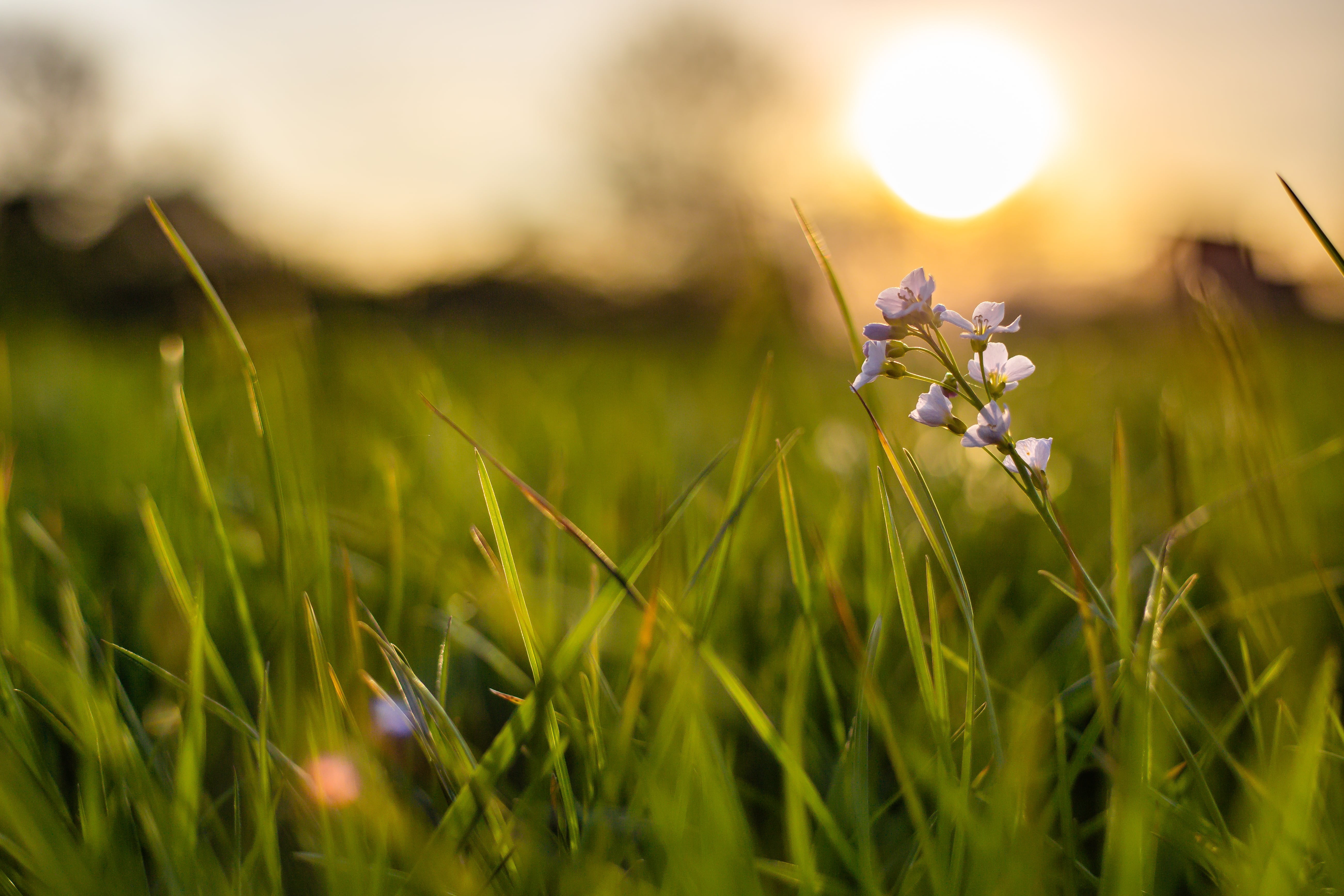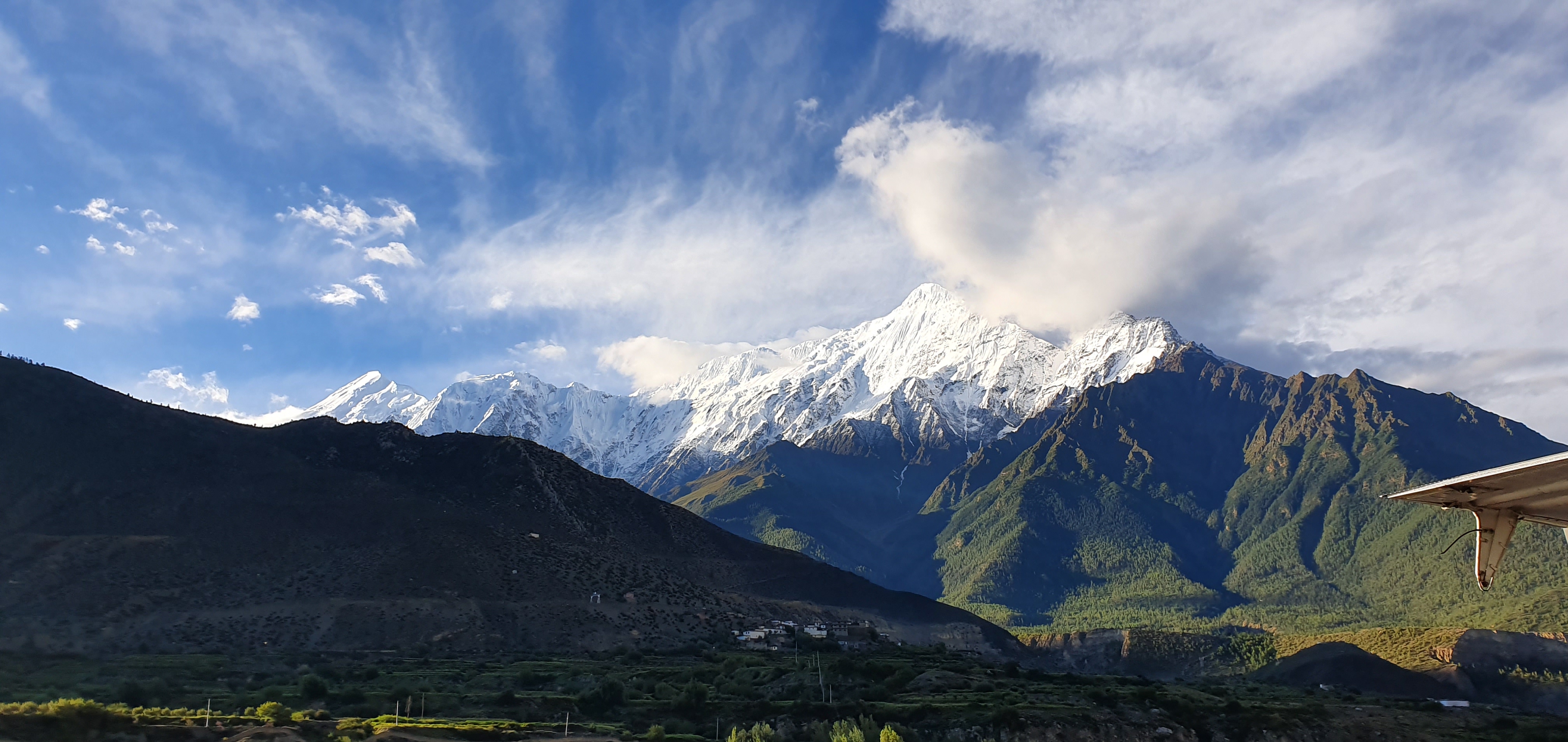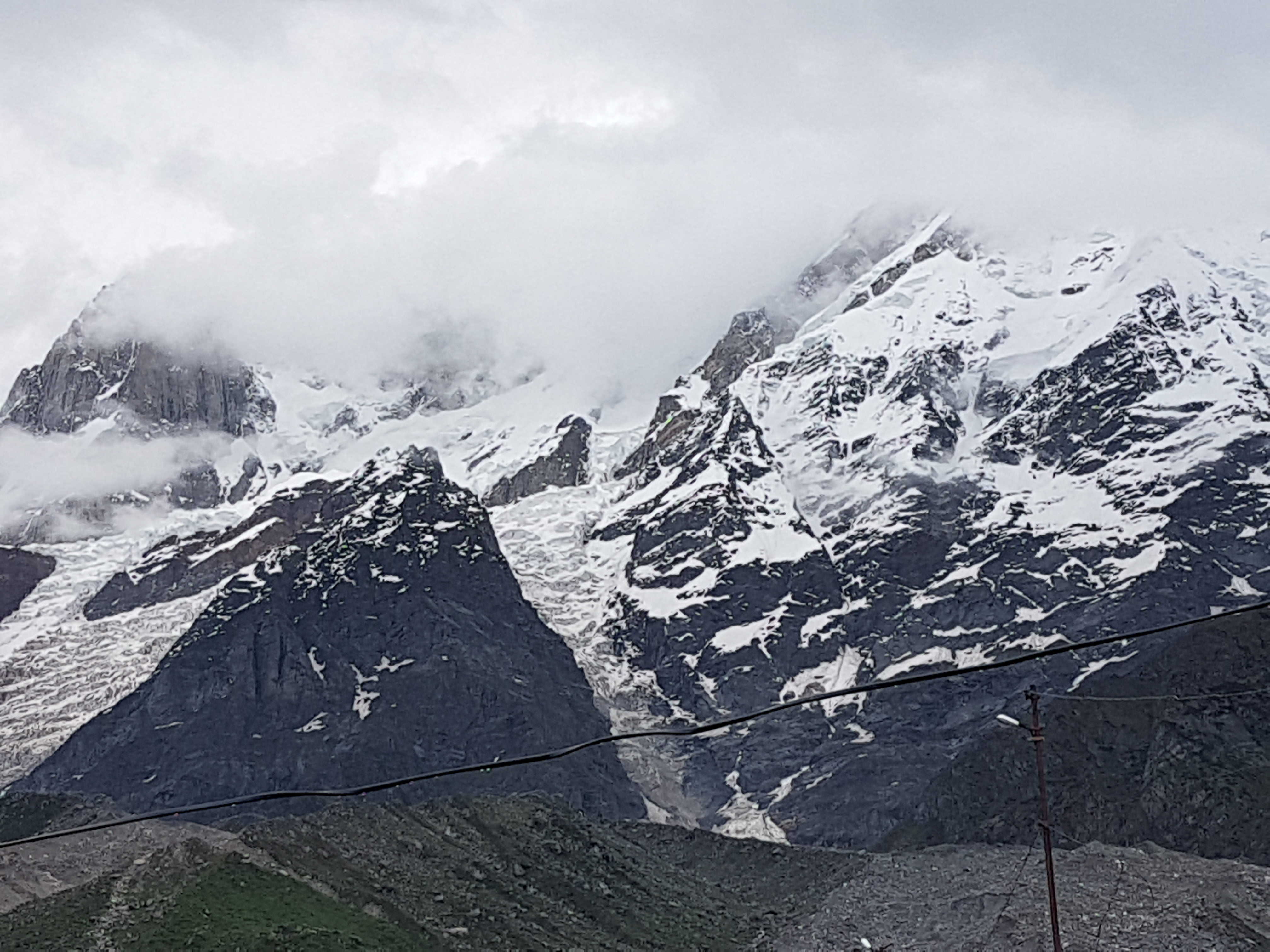Yajurveda
Yajurveda
Vedas are the most ancient text corpus to be found in the whole world; they consist in Rig, Yajus, Sama and Atharva Veda. Among these, the Yajurveda consists of mostly prose and thus differs from other Vedas: “Yajuh Gadyatmakam” means “in the form of prose”. Most parts of this Veda describe the way a great number of rituals are to be performed in various Yajñas and Yāgas. This Veda also gives us explanations for some Mantras of Rigveda. Yajurveda comes to us in two ways: Śukla (White/Pure) Yajurveda and Kṛṣṇa (Krishna) (Black/Dark) Yajurveda. The Śukla Yajurveda is so called because the Mantras it contains are very well arranged and they are clear too, whereas in the Krishna Yajurveda, the contents are not well arranged and are seem amalgamated. Krishna Yajurveda is also known as Brahmasampradāya and Śukla Yajurveda as Ādityasampradāya.
There is a beautiful story behind the classification of Yajurveda as Krishna and Śukla. Vaiśampāyana Rishi taught the Yajurveda to his students; one among them was Yajñavalkya Rishi. But once, the teacher became angry with Yajñavalkya and asked him to give back the Veda he had received from him. Yajñavalkya obeyed the order in his way: he vomited the whole Veda, using his Yogic power. Vaiśampāyana then told his other students to swallow the Yajurveda vomited by Yajñavalkya. These students, after changing their form to Tittiri birds, swallowed it; the name Krishna (black) Yajurveda may come from the fact it has been vomited, while its other name of Taittirīya may come from the birds. Later, Rishi Yajñavalkya made prayers to the Sun-god who appeared before him in the form of Vaji, a horse, and taught him Vājasaneya Saṃhitā or Śukla (white) Yajur Veda.
Vājaseneya Saṃhitā, the Saṃhitā of Śukla Yajurveda, has two Śākhās or recensions: Kānva Śākhā and Mādhyandina Śākhā. This Saṃhitā talks about the sacrifices like Darśapūrṇamasa, Caturmasya, Somayāga, Vajapeya, Brahmayajña, Paitrumedha, Sautramani Yāga etc. This Saṃhitā of Śukla Yajurveda is in usage in Maharastra and many north Indian states. In this Saṃhitā, there are forty chapters called Adhyāyas and the total number of Mantras available is 1975 in some texts and 1800 in some other texts.
Kānva Śākhā & Mādhyandina Śākhā
The two recensions of the Śukla Yajurveda are named after two students of the sage Yajñavalkya: Kānva, the son of Angiras Ghora, and Mādhyandina. They differ only very slightly in content. Kānva Śākhā is used only in Maharastra and the Mādhyandina Śākhā in almost all parts of north India. The Kānva Śākhā seems to be older than the Mādhyandina Śākhā. The difference between these two is seen only in the sacrificial modus operandi.
In both Śākhās, the first twenty-five chapters give and describe the prayers used for various types of sacrifice such as those to be performed at full moon days (Darśapūrṇamasa), rituals concerned with the forefathers, the ritual named Agnihotra that is to be performed every day morning and evening, rituals for the four months of the rains season (Caturmasya), as well as other rituals: Agnistoma, Pasvalambana, Agnicayana, Rājāsūya, Somayāga, Sautramani, Vajapeya and Aśvamedha etc.
Chapters 26 to 29 are Khila Adhyāyas (chapters of appendix or supplements). From the 30th chapter onwards, these texts include: explanations on Purusamedha, a Purusa Sūkta (differing to some extent from the Rigveda version), mantras to be used in Sarvamedha, Śivasankalpa Sūkta, Mantras connected to Paitrumedhika or Pitruyajña and Pravargya ritual.
Krishna Yajurveda
The name “Krishna (black) Yajurveda” may also come from the fact that its mantras are not properly arranged as in Śukla Yajurveda, and from the high amount of prose it contains. According to Patanjali and other scholars, the Krishna Yajurveda has got eighty-six Śākhās. But now only four of them are available to us now. They are:
1) Taittirīya Śākhā
2) Maitrayani Śākhā
3) Kaṭha Śākhā
4) Kapisthala-Kaṭha Śākhā
Taittirīya Śākhā consists of seven chapters called as Khaṇḍas, themselves divided into forty-four Prapāṭhakas, which again are subdivided into six hundred and thirty-five Anuvākas. This Śākhā is mainly dedicated to Yāgas or sacrifices like Vajapeya Yāga and Rājāsūya Yāga.
Khaṇḍa one of this Śākhā explains about the new moon and full moon sacrifices, the soma sacrifice, Agni and Somacayana, Rājāsūya, etc.
Khaṇḍa two contains descriptions about other specific sacrifices.
Khaṇḍa three discuss about the different kinds of supplements for Yāgas like Soma and other Yāgas.
Khaṇḍa four explains the preparation of fire, piling of fire, placing of fire, construction of altar with bricks, sacrifice to Rudra and so on.
Khaṇḍa five is the continuity of the last Khaṇḍa.
Khaṇḍa six discuss the elucidation of Soma Yāga and explanation of Dakṣiṇā.
Khaṇḍa seven (the last Khaṇḍa) explains about the Ekaha (Yāgas performed in one day), Ahina (Yāgas performed in more than one day and not more than twelve days) and Satras (Yāgas lasting more than twelve days and up to thousand days) and Gavam Ayana too.
Maitrayani Śākhā, also known as Kalpa Śākhā, consists of four main Khaṇḍas, divided into fifty-four Prapāṭhakas, having a total of 204 mantras. Yāgas put forward in this Śākhā are Darśapūrṇamasa Yāga, Caturmasya Yāga, Rājāsūya Yāga and Aśvamedha Yāga.
Kaṭha Śākhā consists of five Khaṇḍas, forty Sthanakas or Adhyāyas, thirteen Anuvacanas, 843 Anuvākas, with a total of 3091 Mantras. It describes rituals to be performed for Yāgas such as Agnistoma, Aśvamedha, Rājāsūya and Kāmyeṣṭi.
Kapisthala-Kaṭha Śākhā has six Khaṇḍas, divided into eight Aṣṭakas and again into Adhyāyas. Kapisthala Śākhā recensions are very rare.
Today, Yajurvedikas (those practicing Yajurveda) mostly follow the Taittirīya Śākhā for performing Yāgas and Yajñas.
Krishna Yajurveda is mainly divided into five parts viz. Prajaptya, Saumya, Agneya, Vaiśvadeva and Svayambuva Khaṇḍas. It also gives the indications about the various kinds of Yāgas as Prakṛti and Vikṛti Yāgas. Prakṛti Yāgas (those who are complete) are of three types: Agnihotra, Isti and Soma. In Vikṛti Yāgas on the other hand, only some constituents are performed.
Brāhmaṇas of Yajurveda
Śatapatha Brāhmaṇa is the Brāhmaṇa of Śukla Yajurveda. Its Madyāndina recension is divided into 14 Khaṇḍas divided into 100 chapter or Adhyāyas, 68 Prapāṭhakas, 436 Brāhmaṇas and nearly 7180 Khandikas. Its Kānva recension consists of 17 Khaṇḍas, 104 Adhyāyas, 435 Brāhmaṇas and nearly 6800 Khandikas. This Brāhmaṇa text is attributed to Yajñavalkya Rishi. It explains various kinds of Vedic rituals, symbolisms and many myths connected to Vedas and Vedic rituals especially those connected to Yajurveda. The method of construction of different kinds of fire altars (Yajñakunda), Yajñasala, etc. are very well explained here.
The Khaṇḍas in this Brāhmaṇa are: Ekapatha, Haviryajña, Udhari, Adhvara, Gṛhya, Vajapeya, Sava, Rājāsūya, Ukhasambarana, Astigata, Citi, Saciti, Agnirahasya, Aṣṭadhyāyi, Madhyāma, Aśvamedha, Pravargya and Bṛhadāraṇyaka.
Many scientific matters connected to astronomy and mathematics are dealt with in the Śathapatha Brāhmaṇa, which also contains stories connected to Viṣṇu and His incarnations.
The Krishna Yajurveda in turn has four Brāhmaṇa texts viz. Taittirīya Brāhmaṇa, Maitrayani Brāhmaṇa, Kaṭhaka Brāhmaṇa and Kaṭha/ Kapitha Brāhmaṇa.
In the Taittirīya Brāhmaṇa, the first twenty-five chapters give the prayers used for various types of sacrifices. The first two parts (or Aṣṭakas) describe hymns, Mantras, Devatas connected to different kinds of Yāgas, astronomy, astrology, stories and myths related to various Devatas of Yajurveda etc. The third part (or Aṣṭaka) comprises the instructions and commentaries on Vedic Yāgas like Puruṣamedha, Asśvamedha and Agnicayana. In the first and third Aṣṭaka, we can see the names of 28 Nakṣatras or stars (Kirthika to Bharani and Abhijith) of Vedic astrology. The names of the Devatās for each Nakṣatra are also given.
Āraṇyakas of Yajurveda
Bṛhadāraṇyaka is one of the most famous Āraṇyakas of Śukla Yajurveda (in its available in its both Śākhās). It can be found in the Śathapatha Brāhmaṇa’s last six Adhyāyas. It includes a description of the protocol of the Pravargya (an important ritual to be observed in several major Yāgas). The remaining portion covers the Bṛhadāraṇyaka Upaniṣad.
Taittirīya Āraṇyaka is the Āraṇyaka of Krishna Yajurveda, especially of Taittirīya Śākhā. It deals with the method of constructing and piling of bricks for fire altar. It also gives various Mantras chanted during the Brahmayajña, Paitrumedha, Pravargya. One of the main Praśna named Aruna Praśna that worships sun can also be found in the first Prapāṭhaka of this Āraṇyaka. There are ten chapters in the Taittirīya Āraṇyaka; the seventh, eighth and ninth chapters form the Taittirīya Upaniṣad and the last or tenth chapter is known as Mahānārāyaṇa Upaniṣad. The last portion gives many Mantras that are to be chanted in daily ways for the worship of Sandhya, ancestors etc.
Upaniṣads of Yajurveda
Īśavasyopaniṣad is one of the main Upaniṣad of the Vajaseniya Saṃhitā of Śukla Yajurveda; it is available in both Kānva and Madyāndina Śākhā. It has 18 verses. Though it appears in the last portion of Śukla Yajurveda (40th part), it is called an Upaniṣad because it teaches us about the Supreme reality. It is in the way of a teacher teaching a student about the Ultimate reality. Related topics dealt with in this Upaniṣad are Tattva, Puruṣarthas, Hita, the way to attain the Supreme Brahman, description of the Supreme Reality, etc.
Kaṭha Upaniṣad is one among the major Upaniṣads and it belongs to the Kaṭha Śākhā of Krishna Yajurveda. Its other name is Kaṭhaka Upaniṣad. This Upaniṣad is divided into two chapters (Adhyāyas), each having three subdivisions (Avalis). The Upaniṣad takes the form of a story in which a boy named Naciketa meets Yāma (the God of death) and studies the Ātmavidyā. The discussion between Naciketas and Yāma includes many important subjects related to man’s nature, Jñana (knowledge), Ātma (soul) and Mokṣa (liberation).
Taittirīya Upaniṣad is also one among the major Upaniṣads that belong to the Taittirīya Śākhā of Krishna Yajurveda. This Upaniṣad is divided into three chapters or Avalis: Śikṣa Avali, Anada Avali and Bhṛgu Avali. The first Avali is again divided into twelve Anuvākas or twelve lessons; the second, sometimes called Brāhmaṇandavali, contains nine verses; and the last has ten verses. ‘Śikṣa’ means instruction; the first Avali indeed deals with the instructions that a Master or teacher gives to the disciple during the Gurukula times. It also includes topics as the promise of a student to his teacher, phonetics and the theory of words in the Mantras, the prayer of a teacher, the theory of oneness, real knowledge, the significance of ‘OM’, the duties of a man, the way of ethical living, the student’s acknowledgement, etc. In the second Anadavali, the different layers of knowledge are described: Annamaya, Prāṇamaya, Manomaya, vijñānamaya and Ānandamaya. The Bhṛguvali repeats and stresses the ideas of the former Avalis with the story of Bhṛgu. Many advices given by a teacher to a student are also included.
In addition to these Upaniṣads, two minor Upaniṣads, namely Maitrayani and Śvetāśvatara Upaniṣad also belong to the Krishna Yajurveda. The former contains seven Prapāṭhakas and is in a question answer form related to the Ātman (soul); the later contains 113 Mantras in six chapters and deals with questions and answers related to the primary cause of all the existence in the world, the origin and the end of it, the role of that cause, nature, chance, spirit and necessity.
*********************
Article Prepared by:
Dr. Arun Jaganathan V R
Assistant Professor,
Sree Sankaracharya University of Sanskrit,
Regional Campus Ettumanoor, Kerala, India
Vedas are the most ancient text corpus to be found in the whole world; they consist in Rig, Yajus, Sama and Atharva Veda. Among these, the Yajurveda consists of mostly prose and thus differs from other Vedas: “Yajuh Gadyatmakam” means “in the form of prose”. Most parts of this Veda describe the way a great number of rituals are to be performed in various Yajñas and Yāgas. This Veda also gives us explanations for some Mantras of Rigveda. Yajurveda comes to us in two ways: Śukla (White/Pure) Yajurveda and Kṛṣṇa (Krishna) (Black/Dark) Yajurveda. The Śukla Yajurveda is so called because the Mantras it contains are very well arranged and they are clear too, whereas in the Krishna Yajurveda, the contents are not well arranged and are seem amalgamated. Krishna Yajurveda is also known as Brahmasampradāya and Śukla Yajurveda as Ādityasampradāya.
There is a beautiful story behind the classification of Yajurveda as Krishna and Śukla. Vaiśampāyana Rishi taught the Yajurveda to his students; one among them was Yajñavalkya Rishi. But once, the teacher became angry with Yajñavalkya and asked him to give back the Veda he had received from him. Yajñavalkya obeyed the order in his way: he vomited the whole Veda, using his Yogic power. Vaiśampāyana then told his other students to swallow the Yajurveda vomited by Yajñavalkya. These students, after changing their form to Tittiri birds, swallowed it; the name Krishna (black) Yajurveda may come from the fact it has been vomited, while its other name of Taittirīya may come from the birds. Later, Rishi Yajñavalkya made prayers to the Sun-god who appeared before him in the form of Vaji, a horse, and taught him Vājasaneya Saṃhitā or Śukla (white) Yajur Veda.
Vājaseneya Saṃhitā, the Saṃhitā of Śukla Yajurveda, has two Śākhās or recensions: Kānva Śākhā and Mādhyandina Śākhā. This Saṃhitā talks about the sacrifices like Darśapūrṇamasa, Caturmasya, Somayāga, Vajapeya, Brahmayajña, Paitrumedha, Sautramani Yāga etc. This Saṃhitā of Śukla Yajurveda is in usage in Maharastra and many north Indian states. In this Saṃhitā, there are forty chapters called Adhyāyas and the total number of Mantras available is 1975 in some texts and 1800 in some other texts.
Kānva Śākhā & Mādhyandina Śākhā
The two recensions of the Śukla Yajurveda are named after two students of the sage Yajñavalkya: Kānva, the son of Angiras Ghora, and Mādhyandina. They differ only very slightly in content. Kānva Śākhā is used only in Maharastra and the Mādhyandina Śākhā in almost all parts of north India. The Kānva Śākhā seems to be older than the Mādhyandina Śākhā. The difference between these two is seen only in the sacrificial modus operandi.
In both Śākhās, the first twenty-five chapters give and describe the prayers used for various types of sacrifice such as those to be performed at full moon days (Darśapūrṇamasa), rituals concerned with the forefathers, the ritual named Agnihotra that is to be performed every day morning and evening, rituals for the four months of the rains season (Caturmasya), as well as other rituals: Agnistoma, Pasvalambana, Agnicayana, Rājāsūya, Somayāga, Sautramani, Vajapeya and Aśvamedha etc.
Chapters 26 to 29 are Khila Adhyāyas (chapters of appendix or supplements). From the 30th chapter onwards, these texts include: explanations on Purusamedha, a Purusa Sūkta (differing to some extent from the Rigveda version), mantras to be used in Sarvamedha, Śivasankalpa Sūkta, Mantras connected to Paitrumedhika or Pitruyajña and Pravargya ritual.
Krishna Yajurveda
The name “Krishna (black) Yajurveda” may also come from the fact that its mantras are not properly arranged as in Śukla Yajurveda, and from the high amount of prose it contains. According to Patanjali and other scholars, the Krishna Yajurveda has got eighty-six Śākhās. But now only four of them are available to us now. They are:
1) Taittirīya Śākhā
2) Maitrayani Śākhā
3) Kaṭha Śākhā
4) Kapisthala-Kaṭha Śākhā
Taittirīya Śākhā consists of seven chapters called as Khaṇḍas, themselves divided into forty-four Prapāṭhakas, which again are subdivided into six hundred and thirty-five Anuvākas. This Śākhā is mainly dedicated to Yāgas or sacrifices like Vajapeya Yāga and Rājāsūya Yāga.
Khaṇḍa one of this Śākhā explains about the new moon and full moon sacrifices, the soma sacrifice, Agni and Somacayana, Rājāsūya, etc.
Khaṇḍa two contains descriptions about other specific sacrifices.
Khaṇḍa three discuss about the different kinds of supplements for Yāgas like Soma and other Yāgas.
Khaṇḍa four explains the preparation of fire, piling of fire, placing of fire, construction of altar with bricks, sacrifice to Rudra and so on.
Khaṇḍa five is the continuity of the last Khaṇḍa.
Khaṇḍa six discuss the elucidation of Soma Yāga and explanation of Dakṣiṇā.
Khaṇḍa seven (the last Khaṇḍa) explains about the Ekaha (Yāgas performed in one day), Ahina (Yāgas performed in more than one day and not more than twelve days) and Satras (Yāgas lasting more than twelve days and up to thousand days) and Gavam Ayana too.
Maitrayani Śākhā, also known as Kalpa Śākhā, consists of four main Khaṇḍas, divided into fifty-four Prapāṭhakas, having a total of 204 mantras. Yāgas put forward in this Śākhā are Darśapūrṇamasa Yāga, Caturmasya Yāga, Rājāsūya Yāga and Aśvamedha Yāga.
Kaṭha Śākhā consists of five Khaṇḍas, forty Sthanakas or Adhyāyas, thirteen Anuvacanas, 843 Anuvākas, with a total of 3091 Mantras. It describes rituals to be performed for Yāgas such as Agnistoma, Aśvamedha, Rājāsūya and Kāmyeṣṭi.
Kapisthala-Kaṭha Śākhā has six Khaṇḍas, divided into eight Aṣṭakas and again into Adhyāyas. Kapisthala Śākhā recensions are very rare.
Today, Yajurvedikas (those practicing Yajurveda) mostly follow the Taittirīya Śākhā for performing Yāgas and Yajñas.
Krishna Yajurveda is mainly divided into five parts viz. Prajaptya, Saumya, Agneya, Vaiśvadeva and Svayambuva Khaṇḍas. It also gives the indications about the various kinds of Yāgas as Prakṛti and Vikṛti Yāgas. Prakṛti Yāgas (those who are complete) are of three types: Agnihotra, Isti and Soma. In Vikṛti Yāgas on the other hand, only some constituents are performed.
Brāhmaṇas of Yajurveda
Śatapatha Brāhmaṇa is the Brāhmaṇa of Śukla Yajurveda. Its Madyāndina recension is divided into 14 Khaṇḍas divided into 100 chapter or Adhyāyas, 68 Prapāṭhakas, 436 Brāhmaṇas and nearly 7180 Khandikas. Its Kānva recension consists of 17 Khaṇḍas, 104 Adhyāyas, 435 Brāhmaṇas and nearly 6800 Khandikas. This Brāhmaṇa text is attributed to Yajñavalkya Rishi. It explains various kinds of Vedic rituals, symbolisms and many myths connected to Vedas and Vedic rituals especially those connected to Yajurveda. The method of construction of different kinds of fire altars (Yajñakunda), Yajñasala, etc. are very well explained here.
The Khaṇḍas in this Brāhmaṇa are: Ekapatha, Haviryajña, Udhari, Adhvara, Gṛhya, Vajapeya, Sava, Rājāsūya, Ukhasambarana, Astigata, Citi, Saciti, Agnirahasya, Aṣṭadhyāyi, Madhyāma, Aśvamedha, Pravargya and Bṛhadāraṇyaka.
Many scientific matters connected to astronomy and mathematics are dealt with in the Śathapatha Brāhmaṇa, which also contains stories connected to Viṣṇu and His incarnations.
The Krishna Yajurveda in turn has four Brāhmaṇa texts viz. Taittirīya Brāhmaṇa, Maitrayani Brāhmaṇa, Kaṭhaka Brāhmaṇa and Kaṭha/ Kapitha Brāhmaṇa.
In the Taittirīya Brāhmaṇa, the first twenty-five chapters give the prayers used for various types of sacrifices. The first two parts (or Aṣṭakas) describe hymns, Mantras, Devatas connected to different kinds of Yāgas, astronomy, astrology, stories and myths related to various Devatas of Yajurveda etc. The third part (or Aṣṭaka) comprises the instructions and commentaries on Vedic Yāgas like Puruṣamedha, Asśvamedha and Agnicayana. In the first and third Aṣṭaka, we can see the names of 28 Nakṣatras or stars (Kirthika to Bharani and Abhijith) of Vedic astrology. The names of the Devatās for each Nakṣatra are also given.
Āraṇyakas of Yajurveda
Bṛhadāraṇyaka is one of the most famous Āraṇyakas of Śukla Yajurveda (in its available in its both Śākhās). It can be found in the Śathapatha Brāhmaṇa’s last six Adhyāyas. It includes a description of the protocol of the Pravargya (an important ritual to be observed in several major Yāgas). The remaining portion covers the Bṛhadāraṇyaka Upaniṣad.
Taittirīya Āraṇyaka is the Āraṇyaka of Krishna Yajurveda, especially of Taittirīya Śākhā. It deals with the method of constructing and piling of bricks for fire altar. It also gives various Mantras chanted during the Brahmayajña, Paitrumedha, Pravargya. One of the main Praśna named Aruna Praśna that worships sun can also be found in the first Prapāṭhaka of this Āraṇyaka. There are ten chapters in the Taittirīya Āraṇyaka; the seventh, eighth and ninth chapters form the Taittirīya Upaniṣad and the last or tenth chapter is known as Mahānārāyaṇa Upaniṣad. The last portion gives many Mantras that are to be chanted in daily ways for the worship of Sandhya, ancestors etc.
Upaniṣads of Yajurveda
Īśavasyopaniṣad is one of the main Upaniṣad of the Vajaseniya Saṃhitā of Śukla Yajurveda; it is available in both Kānva and Madyāndina Śākhā. It has 18 verses. Though it appears in the last portion of Śukla Yajurveda (40th part), it is called an Upaniṣad because it teaches us about the Supreme reality. It is in the way of a teacher teaching a student about the Ultimate reality. Related topics dealt with in this Upaniṣad are Tattva, Puruṣarthas, Hita, the way to attain the Supreme Brahman, description of the Supreme Reality, etc.
Kaṭha Upaniṣad is one among the major Upaniṣads and it belongs to the Kaṭha Śākhā of Krishna Yajurveda. Its other name is Kaṭhaka Upaniṣad. This Upaniṣad is divided into two chapters (Adhyāyas), each having three subdivisions (Avalis). The Upaniṣad takes the form of a story in which a boy named Naciketa meets Yāma (the God of death) and studies the Ātmavidyā. The discussion between Naciketas and Yāma includes many important subjects related to man’s nature, Jñana (knowledge), Ātma (soul) and Mokṣa (liberation).
Taittirīya Upaniṣad is also one among the major Upaniṣads that belong to the Taittirīya Śākhā of Krishna Yajurveda. This Upaniṣad is divided into three chapters or Avalis: Śikṣa Avali, Anada Avali and Bhṛgu Avali. The first Avali is again divided into twelve Anuvākas or twelve lessons; the second, sometimes called Brāhmaṇandavali, contains nine verses; and the last has ten verses. ‘Śikṣa’ means instruction; the first Avali indeed deals with the instructions that a Master or teacher gives to the disciple during the Gurukula times. It also includes topics as the promise of a student to his teacher, phonetics and the theory of words in the Mantras, the prayer of a teacher, the theory of oneness, real knowledge, the significance of ‘OM’, the duties of a man, the way of ethical living, the student’s acknowledgement, etc. In the second Anadavali, the different layers of knowledge are described: Annamaya, Prāṇamaya, Manomaya, vijñānamaya and Ānandamaya. The Bhṛguvali repeats and stresses the ideas of the former Avalis with the story of Bhṛgu. Many advices given by a teacher to a student are also included.
In addition to these Upaniṣads, two minor Upaniṣads, namely Maitrayani and Śvetāśvatara Upaniṣad also belong to the Krishna Yajurveda. The former contains seven Prapāṭhakas and is in a question answer form related to the Ātman (soul); the later contains 113 Mantras in six chapters and deals with questions and answers related to the primary cause of all the existence in the world, the origin and the end of it, the role of that cause, nature, chance, spirit and necessity.
*********************
Article Prepared by:
Dr. Arun Jaganathan V R
Assistant Professor,
Sree Sankaracharya University of Sanskrit,
Regional Campus Ettumanoor, Kerala, India
Subsribe our package to Read Full
Subscribe Now

?>resources/frontend/assets/images/4.jpg)

.jpg)








